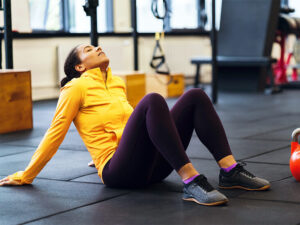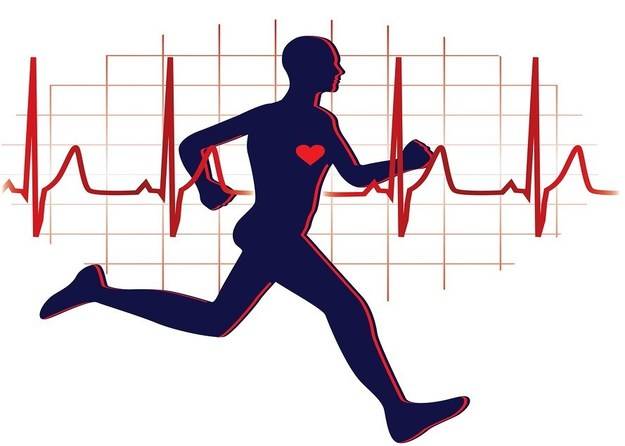A person’s cardiorespiratory endurance is a sign of their general physical health. Cardiorespiratory endurance tests keep track of how well the heart, lungs, and muscles function when engaging in moderate to vigorous exercise.
A person may be able to continue engaging in physical exercise for longer by improving their cardiorespiratory endurance. This boosts oxygen uptake in the heart and lungs.
Cardiorespiratory fitness is often referred to as cardiovascular fitness, cardiovascular endurance, and cardiorespiratory endurance.
We go through what cardiorespiratory endurance is, how to measure it, and why it’s significant in this post. We also discuss various workouts that can be used to increase cardiorespiratory endurance.

What is it?
Cardiorespiratory endurance gauges the body’s capacity for sustained activity. High cardiorespiratory endurance allows a person to perform high-intensity activities for an extended amount of time without becoming fatigued.
How well a person’s body absorbs and uses oxygen is a key factor in determining their cardiorespiratory endurance.
A person’s lungs are full of air as they inhale, and some of the oxygen it contains enters the bloodstream. The heart then pumps this oxygen-rich blood across the body to the tissues and organs that require it.
For the muscles to function correctly during prolonged or high-intensity exercise, they need a sufficient supply of oxygen and other nutrients. Lack of nutrients causes waste products to build up in the muscles, which leads to weariness.
The degree of cardiorespiratory endurance a person possesses can have a direct impact on their physical performance.
How is it measured?
The following are tests that gauge cardiorespiratory endurance:
Metabolic equivalents
Metabolic equivalents (METs) refer to the ratio between the energy expended during physical activity and the energy expended while at rest. Finding a person’s MET involves measuring how much oxygen their body uses at rest.
Maximum oxygen uptake
The maximum quantity of oxygen the body is capable of consuming during high-intensity exercises, such as sprinting or riding, is identified by the maximum oxygen uptake (VO2 max) test.
The VO2 max test often entails as-fast-as-possible treadmill running or stationary bike cycling. The subject dons a face mask that measures oxygen intake and a chest strap or other body device that records heart rate throughout the test.
Why is it important?
Cardiorespiratory endurance is a measure of a person’s level of physical fitness and aerobic health. Not just professional athletes, but everyone can get something from this information.
An individual may often engage in high-intensity exercise for a longer period if they have a high cardiorespiratory endurance.
People who are wanting to lose weight might wish to concentrate on improving their cardiorespiratory endurance because engaging in more strenuous aerobic exercises might increase calorie expenditure.
Improved cardiorespiratory endurance may also have some additional possible health advantages, according to scientific research. For instance:
According to a 2017 study by trusted Sources, those with higher levels of cardiorespiratory endurance are less likely to experience high blood pressure than those with lower levels.
According to a 2015 study by trusted Sources, persons between the ages of 59 and 80 showed a positive association between cardiorespiratory endurance levels and their ability to multitask.
According to a 2015 study trusted Source, increasing cardiorespiratory endurance may lower the risk of coronary heart disease and overall mortality.
How to improve it
Through consistent exercise, people can increase their cardiorespiratory endurance.
the creators of a study from 2019, According to a dependable source, persons between the ages of 40 and 65 who had never been physically active saw increases in their cardiorespiratory endurance and muscular strength as a result of resistance training, endurance training, and high-intensity interval training.
In a 2017 study, researchers looked at how well a 12-week cross-circuit training regimen worked for overweight and intellectually disabled pupils. The study’s findings showed that participants who stuck to the training plan had better body mass indexes, muscle strength, and exercise endurance.
The workouts listed below can enhance cardiorespiratory endurance, promote muscle growth, and burn calories. These physical activities can be done at home or added to a workout plan.
To get the best results, try performing these exercises in sets of 10-15 repetitions, or as many repetitions as you can in a minute with a 20-second pause in between sets.
Jumping jacks
- Start by standing straight up with your legs together and your arms by your sides.
- Get up. Open the legs to spread the feet far apart while in the air, and raise the arms high.
- Bring the feet and arms back to the starting position as you land.
Burpees
- Place your feet shoulder-width apart and stand up straight.
- To descend into a squat, flex the knees and place your hands in front of you on the floor.
- To perform a push-up, jump your legs behind you and place your weight on your hands.
- Step backward into a squat stance.
- Jump into the air while raising your arms above your head.
- Return to the squatting position.
Mountain climbers (running planks)
- Start in the plank posture, keeping the legs straight and the shoulders above the wrists. Maintain a flat back and a spine-aligned head.
- Activate your core muscles.
- Right knee to chest: Bring it in.
- Return the right leg to its starting position while bringing the left knee up to the chest to change the legs. Thus, one iteration is finished.
Side-shuffle touches
- To begin, stand with your feet shoulder-width apart and your arms by your sides.
- Squat down while bending your knees.
- Shuffle to the right with your shoulders apart, then place your right hand’s fingers on the ground just in front of your right foot.
- Shuffle to the left with your shoulders apart, then place your fingertips on the floor just in front of your left foot.
- It has only been done once.
Other activities
Other activities that can enhance cardiovascular and respiratory health include:
- Power walking and running
- Swimming and dancing
- Jump rope vigorous activities, like basketball and soccer
Summary
The ability of the heart, lungs, and muscles to function throughout moderate to vigorous physical activity is known as cardiorespiratory endurance.
Regular exercise, particularly aerobic exercise, can enhance cardiorespiratory endurance. Exercises that increase cardiovascular and respiratory fitness also help the body better circulate and use oxygen.

No Comments
Leave Comment